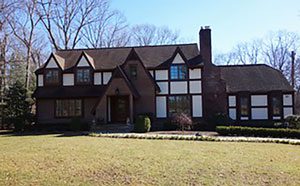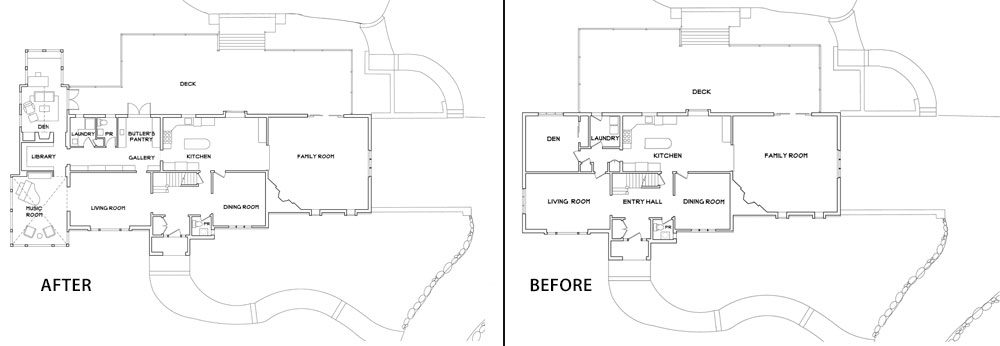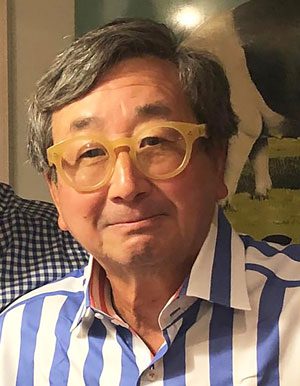Perfect Harmony
Writer Marirose Krall | Photographer Mike Van Tassell | Architect Michael S. Wu, AIA, NCARB | Builder Greg Milano | Location Freehold, NJIn Freehold, a music room addition blends beautifully with — and improves on — an existing home
James and Regina Cunningham had a plan in mind for a renovation project at their Freehold, New Jersey, home. As these things tend to do, the scope of the project broadened as the design proceeded. “The original thought was that we wanted a little sunroom off the living room. From there it morphed into much more of a project,” James Cunningham says.
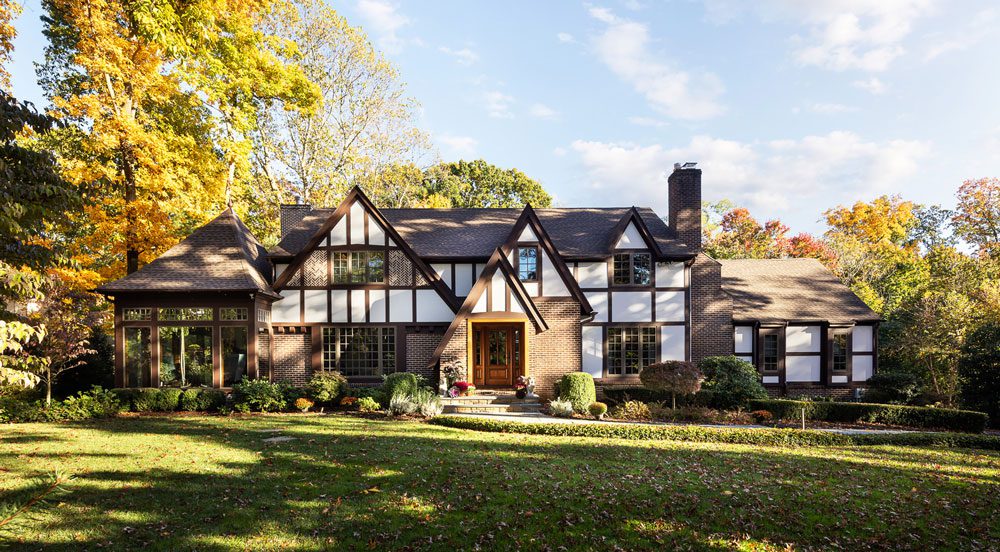
The music room is visible at the far left of the expanded home. Architect Michael Wu retained the symmetry of the front façade by removing two small dormers in favor of a larger gable. To ensure a match between old and new, the project involved reshingling the existing roof and repainting the existing house. Regina Cunningham says, “Michael is an expert in Tudor style. He changed a number of really small things — like adding the corbels at the front of the house — that made a huge difference. He added a lot of detail that made it quintessentially Tudor.”
Fortunately, the Cunninghams had talented professionals to guide them through the process. “Both the architect, Michael Wu, and the builder, Greg Milano, were instrumental in walking us through the process,” Cunningham notes. “I lived here during the construction. I learned a lot about building. When I pulled up one day and the front of the house was torn off, I said ‘oh boy, we’re in for an interesting ride.’”
Wu, whose eponymous company is located in Locust, describes that journey to create an addition that merges seamlessly with the existing structure while improving on the interior layout.
THE ARCHITECT
Design NJ: What did this project entail?
Michael Wu: The project involved creating an addition to the home as well as reworking some existing spaces. We call the addition a music room, but it’s so much more than that. The clients wanted several things: space for a piano, an additional powder room, an office and better access to the rear deck and pool. In addition, the clients are major collectors of artwork, tableware, pottery and books so, as we developed the project, we tried to find areas where they could display their cherished pieces.
DNJ: What challenges were involved in adding on to an existing home?
MW: We had to correct a number of deficiencies in the original layout. In the existing space, for instance, access to the deck and the pool area required going through the laundry room. To create more convenient access, we relocated the laundry room to what was previously an office and designed a butler’s pantry for the former laundry room space. The new butler’s pantry serves as the staging area for barbecues with more convenient access to the deck and the pool. It’s like having a second kitchen. We added double doors to bring in more light.
DNJ: How did the exterior change?
MW: Our goal was to improve on the existing vocabulary. The original façade featured a small shed roof and two dormers. I removed those dormers and made a larger gable, which then centered the entrance with the addition. To match the addition with the existing structure, we reshingled the entire roof and repainted the whole house.
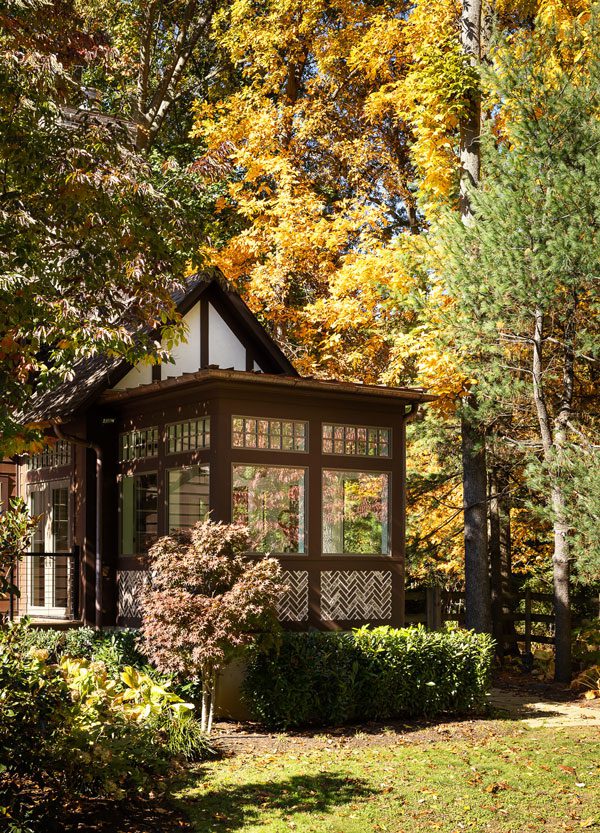
The portion of the addition at the back of the house features thin bricks in a herringbone pattern that match the bricks in the new gable on the front façade.
DNJ: How did you accommodate the homeowners’ collections?
MW: We removed existing built-in closets between the living room and the former office and added a series of display cases in that hallway, which we call the gallery. At the end of the gallery, we needed a focus, so we built a small library to store some of the homeowners’ many books. We hung a painting over the books to create a further focus that draws the eye down into the addition.
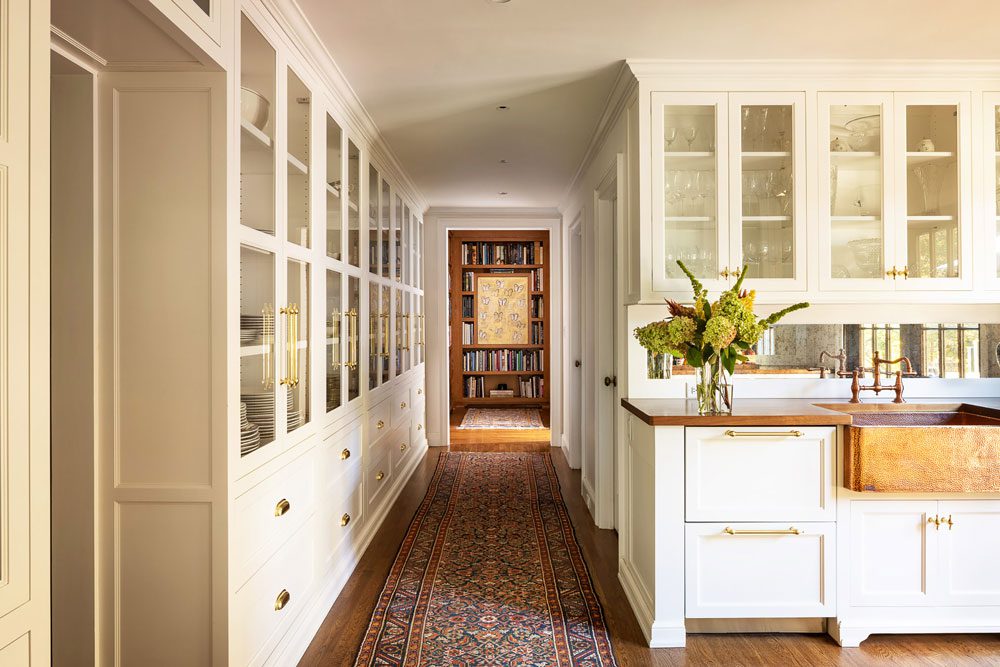
Display cases built into the hallway leading to the addition hold some of the homeowners’ collectibles. The small library at the end of the hall acts as a focal point. The custom white oak shelving was designed to hold artwork — this piece is by Hunt Slonem. The new butler’s pantry (sink and cabinetry shown at right) offers convenient access to the deck and pool.
DNJ: What interested you, architecturally, about this project?
MW: Because this was a single-story addition, I was able to play with the ceiling heights and move away from the mundane, flat ceilings present in the existing house. The addition features two peaks — a pyramidical peak in the music room and a gabled peak in the den.
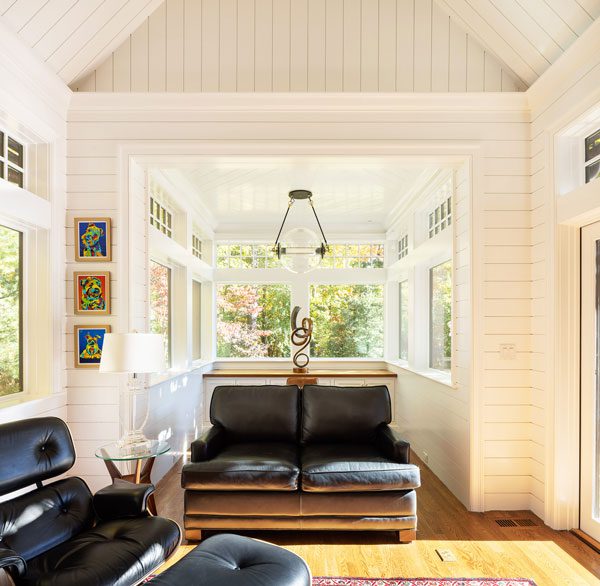
Large windows ensure plenty of light in the den on sunny days. The credenza tucked into the nook behind the loveseat is used as a desk.
The cathedral ceiling in the den is clad in wood boarding that is painted white. Adjacent to the den is a space with a built-in credenza. The credenza serves as a desk and provides storage for a printer and other supplies. The entire space is surrounded by large windows topped with transoms allowing abundant light. The white paint on the ceiling has a little bit of a sheen to it, and that makes the sunlight even brighter in that room.
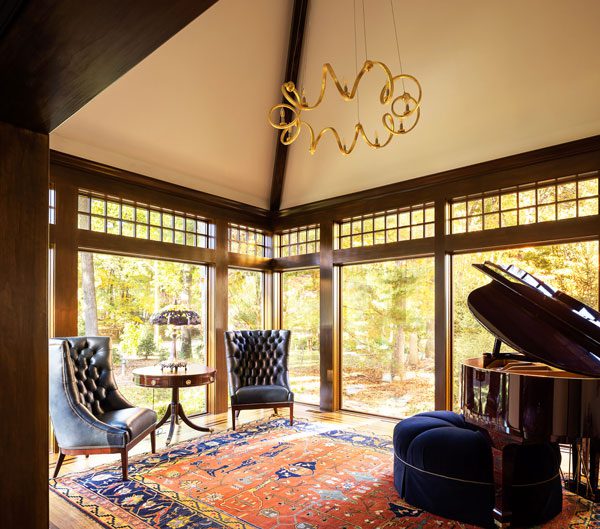
The glass-walled music room required a steel frame to hold up the roof. James Cunningham and his grandson take piano lessons in this room. Regina Cunningham enjoys spending time here as well. “It’s lovely,” she says. “The natural light is incredible. I especially love it in the winter when it’s snowing. It’s so beautiful. It feels like you’re outside but you’re nice and warm.”
The ceiling in the piano room is outlined with dark wood beams. I envisioned this space as a music pavilion, and I made the walls all glass to create something of a garden feature.
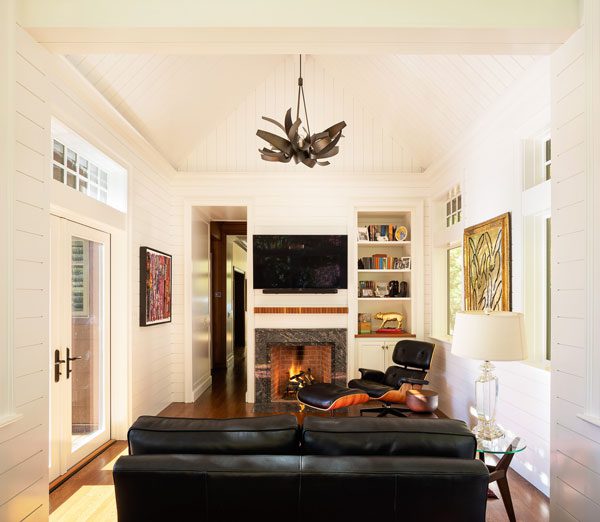
An Eames Chair next to the fireplace in the den is a great spot to relax on a chilly day. The painting at right is by Hunt Slonem and has great meaning for the Cunninghams. “We had a son who passed eight years ago, and we wanted to have a piece to remember him. It’s an abstract piece rather than having a portrait, which would be too sad.”
DNJ: How did you ensure that the glass walls would be structurally sound?
MW: That room needed a steel structure to hold up the roof. In any construction, gravity wants to push the roof downward. Those downward forces produce horizontal thrust, pushing the walls outward. To counter that thrust, I used a square steel “ring” that contains the horizontal thrust so the walls aren’t pushed outward. This is a similar technique used by Filippo Brunelleschi to build the Florence Cathedral.
DNJ: Overall, this project really maximized space — both existing and new.
MW: Yes, it did. It involved a total of 940 square feet — a 615-square-foot addition and renovations of 325 square feet of the existing home. We added an incredible number of amenities into a small area and also made corrections to the flow of the house.
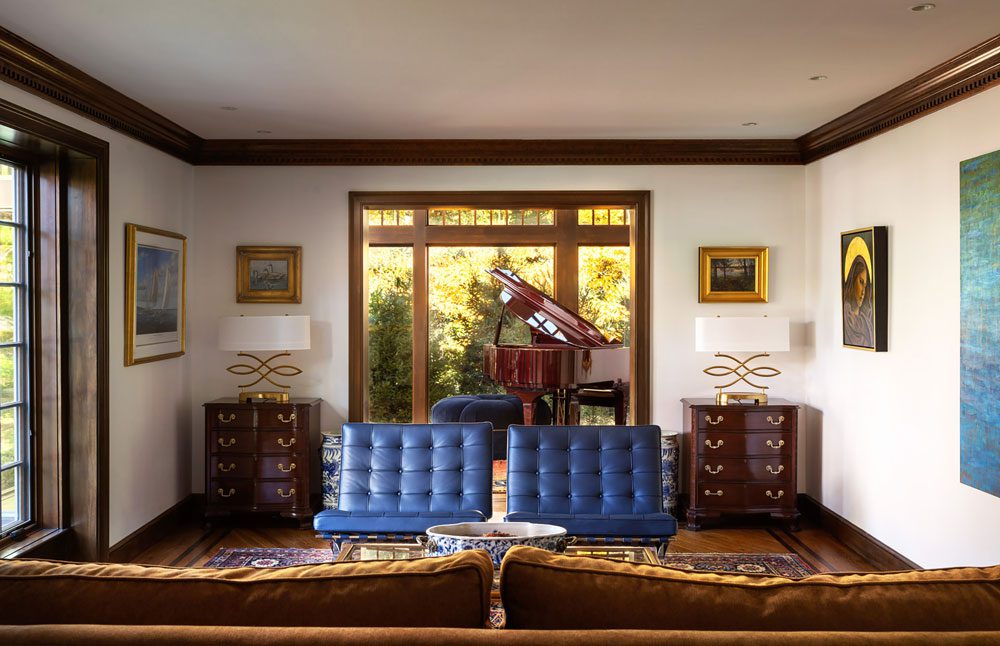
“Our living room had a baby grand piano in it and it felt very crowded,” Regina Cunningham says. Wu’s design called for opening a wall in the existing living room to create an entry to the new music room, which better suits the dimensions of the piano.
THE HOMEOWNERS
The Cunninghams are pleased, not only with the results of the project, but also with the entire experience. James Cunningham says, “Michael pushed our boundaries in terms of our style.” Regina Cunningham adds, “It was transformative. Michael’s creativity is one of the things that really drove his ideas. I don’t think we would have come up with anything like this. We told him about our lifestyle, and he translated it into a space that suits our lifestyle better than we could have imagined.”

